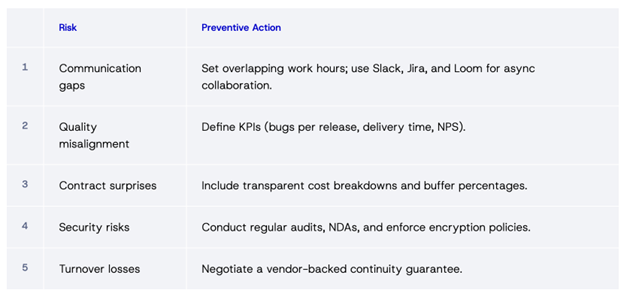1. Introduction: The Outsourcing Paradox
IT Outsourcing has long been celebrated as a strategic way to cut costs, scale faster, and access global talent. According to Statista (2024), the global IT outsourcing market is expected to exceed $512 billion by 2025, growing steadily due to increasing demand for digital transformation and cost efficiency.
But while outsourcing may seem like the perfect solution on paper, many companies face unexpected challenges—hidden costs that often erode the very savings they sought to achieve.
This article explores those hidden costs, how to identify them early, and how to structure outsourcing partnerships to minimize risk and maximize ROI.
2. The Models: What Are You Really Paying For?
Before diving into costs, it’s crucial to understand the most common outsourcing engagement models:

3. The Hidden Costs No One Talks About
1. Communication and Cultural Gaps
Even with English-speaking teams, time zone differences and cultural nuances often lead to misinterpretations.
- Hidden cost: Delays in delivery, repeated revisions, and reduced productivity.
- Example: A McKinsey study (2023) found that 29% of outsourcing inefficiencies stem from poor communication and coordination.
2. Onboarding and Knowledge Transfer
Initial setup and training take time and resources. If turnover occurs, the cycle repeats.
- Hidden cost: Extra 10–15% of project budget on re-onboarding.
- Solution: Create documented onboarding guides and shared repositories.
3. Quality Misalignment
Vendors might optimize for delivery speed or budget rather than quality.
- Hidden cost: Rework costs can reach up to 20–30% of the total project value (Gartner, 2024).
- Solution: Define measurable quality KPIs in your SLA.
4. Management Overhead
Outsourcing services doesn’t eliminate the need for oversight. In fact, it often increases it.
- Hidden cost: Internal managers spend 25–30% more time on coordination when working with external vendors.
- Solution: Use agile ceremonies, progress dashboards, and performance metrics.
5. Hidden Contractual Costs
Change requests, license fees, or overtime are often not included in initial estimates.
- Hidden cost: Projects exceeding budget by 15–40% due to “scope creep.” (Deloitte Global Outsourcing Survey 2024)
- Solution: Build flexible contracts with clear change management processes.
6. Security and Compliance Risks
Data breaches or compliance violations can cost millions.
- Hidden cost: The IBM Cost of a Data Breach Report (2024) found average losses of $4.45 million per incident.
- Solution: Partner only with vendors certified in ISO 27001 or GDPR-compliant.
4. When Outsourcing Still Makes Sense

Despite the pitfalls, outsourcing remains a powerful business tool when used strategically. It’s the right choice if:
- Your company lacks in-house expertise.
- You need to scale fast without long-term hiring commitments.
- The project has well-defined deliverables.
- The vendor demonstrates transparency, technical excellence, and cultural fit.
- How to Avoid the Hidden Costs: Practical Framework
Checklist before signing an outsourcing contract:
✅ Define business KPIs, not just technical deliverables.
✅ Ask for real client references.
✅ Test communication and responsiveness before signing.
✅ Include exit clauses and knowledge transfer procedures.
6. Conclusion: Outsourcing with Eyes Wide Open
Outsourcing isn’t a trap—it’s a tool. But like any tool, it requires skill to use effectively.
By recognizing hidden costs upfront, setting clear expectations, and choosing the right partner, companies can turn outsourcing into a genuine competitive advantage rather than a source of frustration.
As Deloitte’s 2024 Global Outsourcing Survey concludes, 73% of businesses plan to increase outsourcing—but the smartest ones are those who go in prepared.






